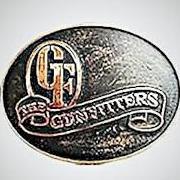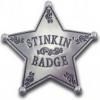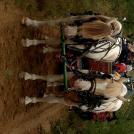-
Content Count
18 -
Joined
-
Last visited
About Gunfitters
-
Rank
Member
Contact Methods
-
Website URL
facebook.com/gunfitters
Profile Information
-
Gender
Male
-
Location
Stoughton, WI
-
Interests
Shooting, Music, Restoration, Concealed Carry Instructor, Amateur Radio
LW Info
-
Leatherwork Specialty
Holsters
-
Interested in learning about
Sewing Machines, Protoyping, Laser cutters, Pattern making
-
How did you find leatherworker.net?
YouTube
Recent Profile Visitors
319 profile views
-
This is a prototype based on a Summer Special but I added a trailing slot to allow between belt and pants carry if wanted. I used 4 oz. and made it rough out to better maintain position when in IWB mode like the Summer Special. The top band has a spring steel reinforcement sandwiched between the body and top band, made from a large stainless steel spring clip. A "T" post is drilled through and set in the steel band, and protrudes 1/16" out a matching hole in the top band. A "T" post is like wise set on the opposite side of the top band to make it ambidextrous. The reinforced top band prevents "holster crush" when the piece is drawn and allows easier re-holstering. The belt keeper has the other hole for the "T" post screw. The keeper pivots 360 but the screw can lock the keeper in place. Notes: The belt keeper would benefit from "Pull-The-Dot" directional snaps and the holster should have a pronounced body/sweat shield. You could make the body shield removeable/reversible by using the other "T" post on the body side. Their should be more muzzle protection also. (Warning: I wouldn't wear such a large pistol in the SOB position to prevent lower lumbar injuries. This was a prototype.)
-

Slicking inside of holster
Gunfitters replied to 327fed's topic in Gun Holsters, Rifle Slings and Knife Sheathes
I hand block/bone. (Although a vacuum table would be good for the initial blocking) Then let it almost completely dry. Then Resolene/water 50/50 inside and out. Let it absorb and bone it again. It will get glossy smooth inside. Pull the piece and let it dry and off gas. Then Techenol or Leather Balm inside and out. Technol is a topcoat and doesn’t soak in like the Resolene/Sheen will. Then buff the outside with a horse hair wheel, -

First Formed Holster
Gunfitters replied to rktaylor's topic in Gun Holsters, Rifle Slings and Knife Sheathes
A full combat grip should be obtainable on the piece while still in the holster. You don’t want to be shifting your grip during the draw stroke. Hopefully the situation will resolve without having to clear leather. Roy Baker pancake style holsters tend to have a natural sight track due to the “sandwich” space but I’d still put a sight filler to block against like a formed dowel. With wrap around Askins style holsters a sight track is a must. If I use a reinforced top band piece I try to stop it parallel to the frame rail so my trigger finger has something to index along side. -

Retention on railed guns
Gunfitters replied to fortenberryshel's topic in Gun Holsters, Rifle Slings and Knife Sheathes
JL Sleather is right. Where as other leather artisans wet form or wet mold, holster makers block and bone. You can’t block against something that isn’t there. For example, on Beretta M9’s they have an open frame top. But we want something hard to block against to create the sight track. I’ll put packing tape on the area, fill in the open space with hot glue, then form the sight track. Then I’ll cover the glue with tape. Now when I bock and bone the area, it stays blocked since it had something to block against. Then pull off the track, and save it for the next Beretta. In your case you could fill the rail voids, then tape and block/bone. Now days I supposed you could laser scan a sight area or rail and 3D print a block filler. Good thing is your boning tight. Set a close stitch line, bone tight, and the piece will break draw off the barrel without boning into the rail sections. -
The first type is the kind I use. Once you are pinching two layers of 8/9 oz. together, the non-parallel jaws are not an issue. All the edges are smooth and radiused. This one is cut for normal trigger guards, but one could be cut for finger groove types like Glocks. I was thinking of using a tool dip on the blades, but there never has been a staining issue. (The holster is just there for reference, the jaws would be used much earlier in the molding process)
-
I used to use all kinds of pattern measurement formulas to get the stitch line as close as possible to the firearm when making a wrap around holster. But as soon as you change leather, or case it differently, the wet forming changes, and your pattern is off. Then, in an old issue of the Leather Craftsman, a saddle maker modified a pair of Vise Grip duct workers pliers to pull the cantle binding tight and create his stitch line. I did the same and have never measured since. This is an example of a close stitch line. This was hand blocked and boned to the actual pistol while a sight track was in place. I use blue guns too, but prefer the actual piece.



